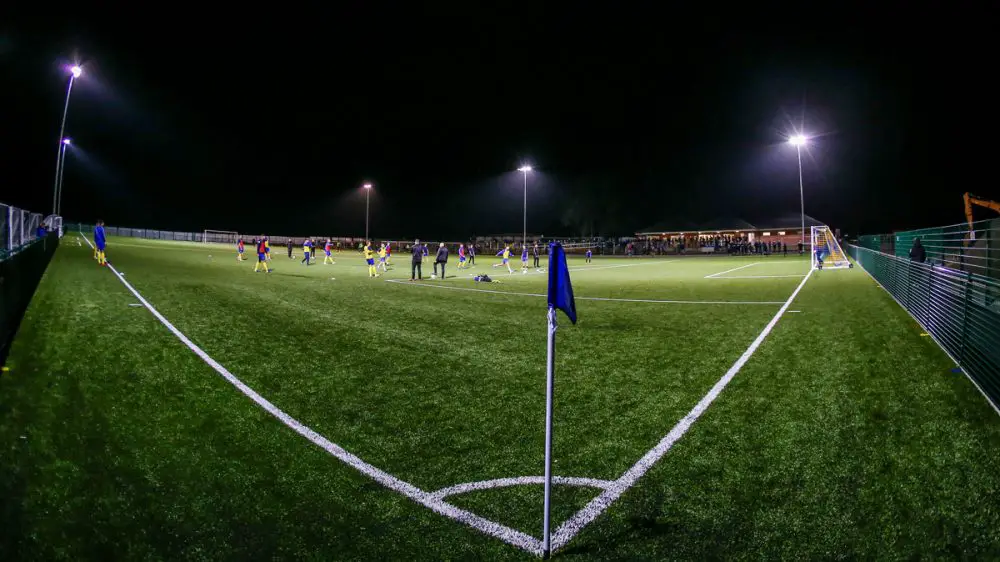
Sudden cardiac arrest is the most common cause of death in athletes, but it’s rarely ever spoken of unless it happens in the public eye. According to global defibrillator distributors, Aero Healthcare, increased funding and awareness of defibrillators, as well as installation across many more football clubs could save a life. Campaigns from The Circuit designed to enhance awareness and availability of defibrillators, and funding opportunities available from Community Heartbeat Trust for football clubs, are making this possible.
Since the heartbreaking scenes of Christian Eriksen collapsing on the pitch at the Euro 2020s, defibrillator installations have soared across the UK. With many seeing the successes of CPR and defibrillation on the footballer, communities are now trying to protect their own in the event sudden cardiac arrest occurs. What’s more, it was the realisation that the nearest defibrillator was over 10 minutes away from the scene. And, for every minute that passed, the footballer’s condition could deteriorate by up to 10%without the help of a device.
Across the UK, football clubs, golf clubs, bowls associations, local cricket grounds and many more sporting associations and organisations have invested in their own defibrillators. Even local areas are turning their disused phone boxes into defibrillator stations. So, with full, partial, and self-funding options available, how can football clubsfind a defibrillator solution that works?
What are the dangers of sudden cardiac arrest?
What does this mean for football?
As a well-loved sport across the nation, up to 2 million of us tune in to watch Premier and Champions League matches. What’s more, it’s the most popular children’s team sport with around 1.5 million players engaging in the sport at least twice a month. Unfortunately, as we’ve seen unfold on television, sudden cardiac arrest doesn’t discriminate against the athletically fit and healthy.
With scenes of Christian Erikson’s tragic and quick collapse on the pitch, our hearts poured out for him, wishing for his speedy recovery. Fortunately, with the right treatment, he survived and inspired a surge in defibrillator sales. Across the country and the world, this isn’t always the case. Around 617 players passed away due to sudden cardiac arrest between 2014 and 2018. Where a defibrillator wasn’t present, the survival rate peaked at 35%. For the lucky ones with a defibrillator available, their chance of survival increased to 85%.
What funding is available for Football Clubs?
£1 million defibrillator fund (England only)
Community groups and organisations could bid for funding, offered by the UK Government, that places life-saving devices within their local area and at their sites. The funding has around £1 million set aside specifically for introducing defibrillators into local communities. With approximately 1,000 defibrillators available, the Community Automated External Defibrillators Fund aims to fit them for community groups, sporting clubs and local public landmarks.
As part of your football club’s application, you’ll need to submit an expression of interest form. You’ll also need to demonstrate that the defibrillator will be placed and located in accessible areas where community groups can use it. For your local football grounds, this could be located around the outside or inside any public access building, like a village hall.
Part-funding for Defibrillators by St John Scotland
If you are based in Scotland, your football club could benefit from part funding. St John Scotland co-ordinates a successful defibrillator project, supporting community groups, organisations, and local sports clubs in purchasing an AED for their use. Around 25% is funded by St John Scotland, including the cost of the device and its protective case, with the rest stemming from your fundraising efforts.
Defibrillator funding for community groups, including sports clubs
Thanks to pioneering from the British Heart Foundation, fully-funded defibrillators could become available across the UK. This could be happening as soon as October 2023.
You’ll need to apply on behalf of your football club, but successful applicants will meet a range of specific criteria as well. If your football club shares a hall or grounds with other community groups, you must also apply with their permission and knowledge too. However, installing a defibrillator on-site could work to their advantage too.
Funding will be awarded based on specific criteria including:
Premier League defibrillator fund for grassroots football
Designed just for grassroots football, the Premier League Defibrillator Fund provides thousands of clubs and facilities with easily accessible external defibrillators and storage cabinets. Around 2,000 venues are currently without the necessary equipment, lessening the chances of survival if someone enters sudden cardiac arrest. It’s thought the scheme could majorly impact this figure and improve access to life-saving devices.
The Premier League states the fund will ensure that these devices should support up to 1.5 million players, site users and visitors every year. These devices could be stored within 200m of the pitch, meaning an even greater chance for those suffering sudden cardiac arrest.
The Premier League Defibrillator Fund is open to:
Grassroots football clubs and facilities wishing to apply for funding can complete the Premier League’s eligibility checker to determine if they qualify.
Defibrillator grants from the National Lottery
The National Lottery could grant you the funds for a defibrillator and protective case, without you having to meet set criteria or supplement with fundraising. Although this isn’t specifically aimed at supplying defibrillators to the local community, it has awarded more than £500,000 in grants for projects, which can easily be put towards installing life-saving devices within your local football club.
Access defibrillator funding and support from AEDdonate
Funding, maintaining and registering a public access defibrillator can be challenging, that’s why AEDdonate has helped thousands of sporting groups in the UK to achieve this. They set up applicants with their own online fundraising page and fundraising pack and provide ongoing support before and after installation.
What’s more, AEDdonate also offers at least £400 of fund to help with the cost of your defibrillator campaign, whilst providing access to free online training for users. The company will then monitor the defibrillator site to ensure they are always live and available to the community.
How will installing a defibrillator save lives?
As studies have shown, a defibrillator could increase the chances of survival by up to 90%. In the case of football, of all the incidents recorded between 2014 and 2018, those without a defibrillator had only a 35% chance of survival, whereas when one was used, chances increased to up to 85%. This demonstrates just how important defibrillators are for football club, and how their presence could certainly save a life.
Football in Berkshire has a Breaking News WhatsApp Channel where we’ll send you updates on all the latest football news from the Royal County. You can join Breaking Berkshire Football News by clicking here.
